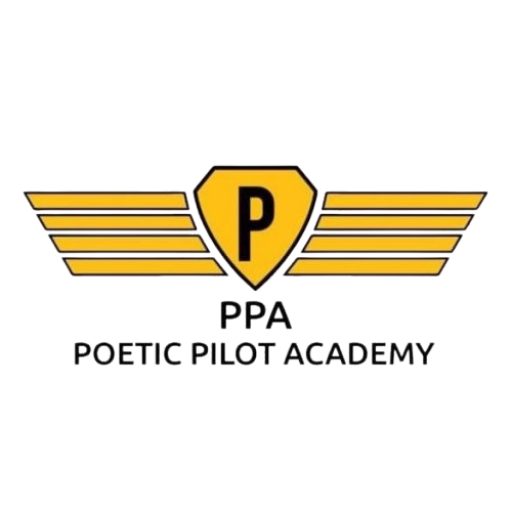COMMERCIAL PILOT LICENSE (CPL)
This license allows a pilot to fly an aircraft for compensation like a Flight Instructor or an Airline/Charter Pilot.
Requirements:
- Age:Be at least 18 years old at the date of application. One can start training at 16.
- Education:Have passed 10+2 standard or equivalent with Physics and Maths. Medical, Commerce, arts students can give Physics or Maths through NIOS.
- Medical Fitness Requirement:Valid DGCA Class I Medical assessment.
- English Language Proficiency:Both verbal and written
- Pass the DGCA CPL theory exams
- Complete 200 hours of flight hours
- You must complete a minimum number 200 flight hours, including 100 hours pilot in command (PIC), 50 hours solo cross country, 15 hours of night and 20 hours instrument flight.
- The course covers general flying, aircraft testing, and skills assessment.
- Duration: Flight training takes an average of 10-12 months, depending on weather, students learning skills.
FLYING TRAINING
The most exhilarating phase of a pilot’s journey begins with their flying training. To obtain a CPL, student pilots should finish their exams and must accumulate a minimum of 200 flight hours in India or abroad. Once these flight hours are met, pilots submit their documents including Class 1 medical assessment and DGCA exam Results, conversion documents (if flight training is done from abroad) to the DGCA and receive their INDIAN Commercial Pilot Lic.
Flight Training
Flight training involves a combination of dual (with an instructor) and solo flying hours. Key components of the practical training include:
- Basic manoeuvres: Steep turns, stalls, slow flight, and recovery from unusual attitudes.
- Cross-country flying: Planning and executing longer-distance flights.
- Night flying: Training in handling aircraft operations during night-time.
- Instrument training: Flying solely with reference to instruments, critical for navigating in low visibility.
- Commercial manoeuvres: More advanced techniques, such as precision approaches, complex aircraft handling, and emergency procedures.
- choice of flying school depends on individual priorities, such as budget, time constraints, and exposure. While no school is inherently superior or inferior, it’s essential to carefully consider these factors.
FLEET
Most flight schools all over the world primarily rely on Cessna, Piper, Tecnam and Diamond aircraft due to their reliability, efficiency, and cost-effectiveness. The Cessna 172 and Diamond DA20/DA40 are the most common for PPL and CPL training, while the Diamond DA42 and Piper Seminole/Seneca are preferred for multi-engine ratings. These aircraft provide student pilots with a well-rounded flight training experience, preparing them for airline careers.
- Single-Engine Trainer Aircraft (Used for PPL & CPL Training)
- Cessna 172 – The most widely used trainer aircraft globally; stable, forgiving, and perfect for student pilots.
- Cessna 152 – A compact and economical two-seater trainer ideal for beginners.
- Piper PA-28 (Cherokee, Warrior, Archer) – A low-wing alternative to Cessna, used in many Canadian flight schools.
- Diamond DA20 Katana – A modern, fuel-efficient aircraft used for primary training.
- Diamond DA40 – A glass cockpit trainer preferred for advanced PPL and CPL training.
- Tecnam P2008 – A lightweight, fuel-efficient aircraft used in a few Indian flight schools.
Multi-Engine Trainer Aircraft (Used for Multi-Engine Rating & Advanced Training)
- Diamond DA42 Twin Star – A modern, fuel-efficient multi-engine trainer with advanced avionics.
- Piper PA-34 Seneca – A popular twin-engine trainer used for multi-engine and IFR training.
- Beechcraft Duchess BE-76 – A widely used multi-engine trainer in some Canadian flight schools.
- Piper PA-44 Seminole – A light twin-engine aircraft commonly used for commercial and instrument training.
Advanced Trainer Aircraft (Used for Instrument & Flight Instructor Training)
- Cessna 182 Skylane – A high-performance trainer used for advanced flight training.
- Cirrus SR20/SR22 – A modern aircraft with glass cockpit avionics, often used for higher-level training.
- Beechcraft Bonanza – Occasionally used for high-performance endorsements and advanced navigation training.
INDIA
With increasing airline demand, these flight academies provide opportunities for local job placements and familiarization with domestic airspace regulations. FTO feature modern aircrafts and advanced simulators, ensuring comprehensive training. Additionally, training in India helps students avoid visa hassles and foreign exchange costs, Conversion process, making it a convenient choice for aspiring pilots.
USA
The USA is the best country for flight training due to its well-established aviation infrastructure, numerous FAA-approved flight schools, and access to advanced training technology. With a high volume of airports, lenient airspace restrictions, and favourable weather conditions, students get extensive flying experience in a real-world environment. Training is faster due to streamlined certification processes. Additionally, U.S. pilot licenses are globally recognized.
SOUTH AFRICA
Flying training in South Africa is often cheaper than India due to lower operational costs. favourable exchange rates, and less congested airspace. Flight schools in South Africa offer internationally recognized licenses. With high training standards, modern aircraft, and excellent weather conditions for year-round flying. As a result, many aspiring pilots choose South Africa for more affordable and efficient pilot training.
CANADA
Lower Cost Compared to the USA & India
Globally Recognized Pilot License
Uncongested Airspace & Real-World Weather Conditions
Post-Training Job & PR Opportunities
Lower Hour Requirement for ATPL
Direct conversion of Canadian RT lic. into Indian RTR.
